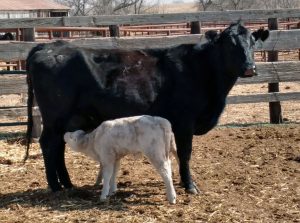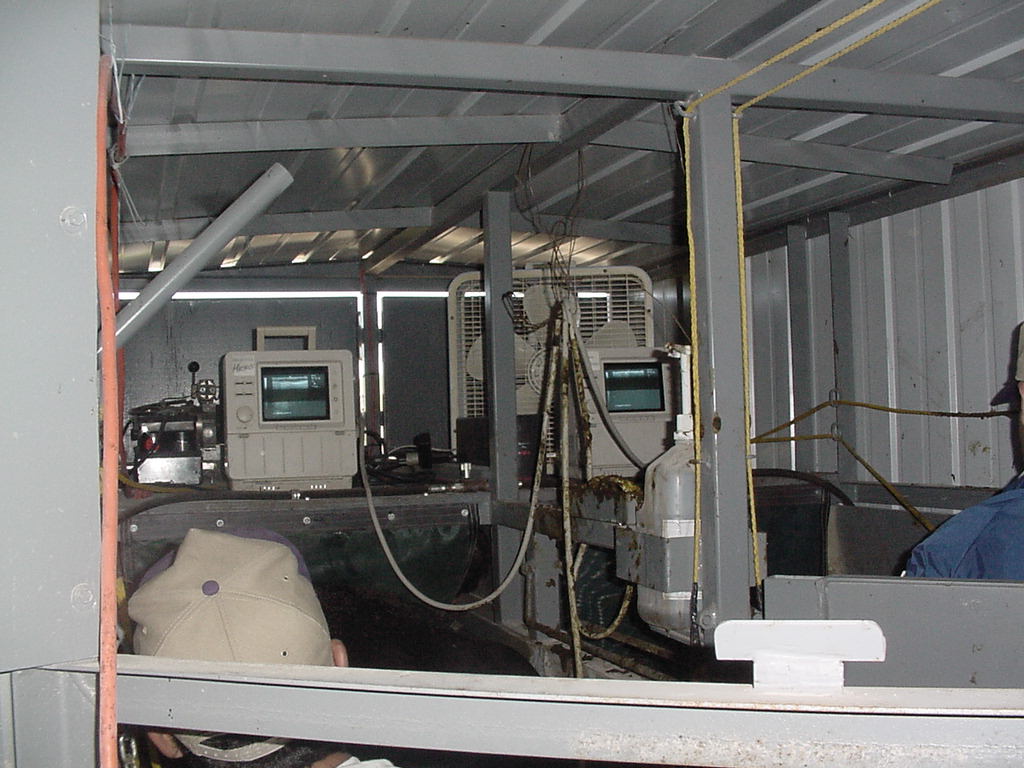By Sandy Johnson, Extension Beef Specialist, Colby, and AJ Tarpoff, DVM, Extension Veterinarian
 The checklist below is designed to help you plan and prepare to improve the success of your calving season and weaned calf crop.
The checklist below is designed to help you plan and prepare to improve the success of your calving season and weaned calf crop.
- Balance cow rations for adequate protein and energy for increased third trimester and subsequent lactation requirements. Group and feed cows by body condition and age to the degree possible. Target body condition for first calf heifers at calving of 5.5 to 6 and 5 to 5.5 for mature cows.
- Develop sound vaccination program to prepare the cow to produce high quality colostrum.
- Control lice and internal parasites.
- Plan for recording calving data and consider ways to backup records.
- Make sure calving facilities are clean and in good repair
- Plan for ear tags, tattoos, scale or weight tape, banding or castration.
- Check flash lights and other quality portable light sources.
- Check-list for calving assistance
- OB chains, calf puller, OB gloves, OB lube (non-detergent soap & water is one option), non-irritant antiseptic (Betadine or Nolvasan), flank rope to lay cow down
- A cooler can be used to keep warm water in calving barn if no other source available.
- Old towels or similar
- Review basic treatment plans with local veterinarian for retained placenta, calf scours, colostrum replacers and supplements and ensure necessary treatments and supplies are on hand or readily available. Include a functional thermometer.
- Know the difference between colostrum supplements and replacers, in most instances use replacers that contain at least 100 IgG per dose.
- Have on hand at least 2 clean and functional esophageal tube feeders, clearly marked, one for healthy calves, one only used for sick calves.
- Plan and watch for opportunities to collect colostrum from within the herd. Date and freeze in quart sized plastic bags for future use.
- If replacement calves are obtained from outside the herd, plan for their isolation and testing before exposing to entire herd.
- Plan for severe weather; wind, freezing rain and blizzards are not uncommon. Plan for correcting calf hypothermia. Calf shelters should be in good repair, bedding on hand. Plans for portable windbreaks and calf shelters are available from your local extension office.
- Shift feeding to dusk or later to promote day time calving one week before anticipated start of calving season.
Develop standard operation procedures for calving and providing assistance. Include list and contact information for individuals who can provide more expertise or assistance as required. The following are suggestions on when to intervene.
- You suspect cow has been in Stage 1 over 8 hours. Stage 1 characteristics; restlessness, pain, lie down and get up frequently, seek isolation (signs more apparent in first-calf heifers than mature cows).
Stage 2 –
- Water sack visible for 2 hours and cow is not trying
- Cow trying for over 30 minutes and no progress is being made
- Cow has quit trying for over 15-20 minutes after a period of progress
- Cow or calf showing excessive fatigue or stress (swollen tongue or excessive bleeding)
- You can observe the calf presentation is other than two front feet and head first.
When Calving Starts
- Calves should have colostrum within first 2 hours of life, if calf can’t get colostrum from dam, take steps to give colostrum within 4-6 hrs of birth.
- Colostrum intake should be 10% of calf’s body weight, 0.5 – 1 gallon. First choice is for calf to nurse a bottle so that colostrum goes directly to the abomasum. Don’t over feed to encourage calf to nurse on its own, 1.5 quart dose good starting point.
- Handle healthy calves before sick calves and avoid exposing newborns to contaminants on clothing or materials used on sick calves.
- If a cow is brought in for any amount of calving assistance, make sure she leaves with a clean udder.
Work towards developing a notebook that has all the standard operating procedures for your operation. Include things like yearly vaccination plans, treatment protocols, calving and calving assistance protocols, euthanasia protocols, drought management plans and weather emergency plans. This will be a valuable resource when communicating with employees new and old, when reviewing what needs to be improved for the next year or if a health emergency forces someone else to take care of the herd.

